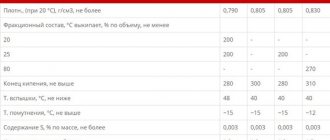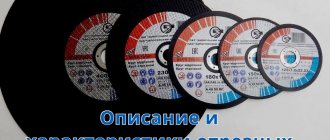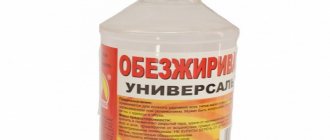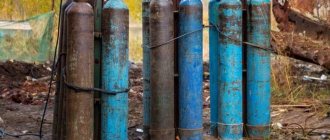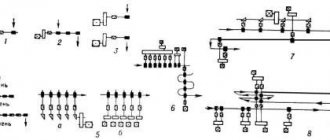07.02.2018
The properties of kerosene have made it in demand in various fields. A transparent, oily liquid suitable for use as fuel, fuels and lubricants and all kinds of additives. Kerosene is resistant to low temperatures and has high combustion and evaporation rates. It is also compatible with raw materials having a different composition.
Kerosene, a petroleum product obtained by rectification and recycling of raw materials. In some cases, it is additionally hydrotreated
Chemical composition and properties of kerosene
The chemical composition of kerosene obtained by cracking may vary depending on the type of oil it is derived from, as well as the technology used for its processing and further purification of the kerosene distillate. On average, this petroleum product may include:
- alifactic carbons in percentage from 20 to 60;
- naphthenic carbons in percentage from 20 to 50;
- bicyclic aromatic carbons in percentage from 5 to 25;
- unsaturated carbons in percentage up to 2.
At higher temperatures of kerosene
the amount of bicyclic aromatic carbons increases. At the same time, their lower content in the finished petroleum product helps to increase the intensity and brightness of the flame. A high percentage of heavy fractions leads to deterioration in the combustion of this petroleum product, therefore, after its production, special chemical and hydrotreating is carried out.
The high volatility of this product should also be taken into account. When the concentration in the air exceeds 300 mg/m3, there is a risk of poisoning by kerosene vapors. This imposes certain requirements on the storage conditions of this petroleum product.
Chemical (component, hydrocarbon and elemental) composition of kerosene:
Kerosene in its chemical composition is a mixture of various hydrocarbon and non-hydrocarbon components:
– saturated, saturated hydrocarbons (alkanes) – 20-60%,
– cyclic saturated hydrocarbons (naphthenes) – 20-50%,
– aromatic hydrocarbons (arenes) – 5-25%,
– unsaturated hydrocarbons – up to 2%,
– impurities of sulfur, nitrogen or oxygen compounds.
Alkanes (saturated hydrocarbons, paraffins) are acyclic hydrocarbons of linear or branched structure, containing only simple chemical bonds and forming a homologous series with the general formula CnH2n+2. Alkanes are saturated hydrocarbons, meaning they contain the maximum possible number of hydrogen atoms for a given number of carbon atoms.
Naphthenes , also cycloalkanes, polymethylene hydrocarbons, cyclanes or cycloparaffins are cyclic saturated hydrocarbons with chemical properties close to saturated hydrocarbons. They have the chemical formula CnH2n and a cyclic structure (i.e. closed rings of carbon atoms).
Aromatic compounds (arenes) are cyclic organic compounds that contain an aromatic system.
Unsaturated hydrocarbons are open-chain hydrocarbons in whose molecules there are double or triple bonds between carbon atoms.
Sulfur compounds : hydrogen sulfide H2S, mercaptans, mono- and disulfides, thiophenes and thiophanes, as well as polycyclic (heterocyclic) sulfur compounds, etc.
Nitrogen compounds : mainly homologues of pyridine, quinoline, indole, carbazole, pyrrole, as well as porphyrins.
Oxygen compounds : naphthenic acids, phenols, resinous asphaltene and other substances.
The component composition of kerosene depends on the chemical composition and method of processing the feedstock - oil, as well as the type of kerosene.
Rocket fuel
Kerosene is used in rocket technology as a hydrocarbon fuel and at the same time the working fluid of hydraulic machines. The use of kerosene in rocket engines was proposed by Tsiolkovsky in 1914. Paired with liquid oxygen, it is used in the lower stages of many launch vehicles: domestic ones - Soyuz, Molniya, Zenit, Energia; American - series "Delta" and "Atlas". To increase the density, and thus the efficiency of the rocket system, the fuel is often supercooled. In a number of cases in the USSR, a synthetic substitute for kerosene, syntin, was used, which made it possible to increase the efficiency of an engine designed for kerosene without significant changes in design. In the future, it is planned to replace kerosene with more efficient hydrocarbon fuels - methane, ethane, propane, etc.
Basic thermophysical characteristics of kerosene
Kerosene is the middle distillate of the petroleum refining process, defined as the fraction of crude oil that boils at a temperature between 145 and 300°C. Kerosene can be produced by distilling crude oil (straight-run kerosene) or from cracking heavier petroleum streams (cracking kerosene).
Crude kerosene has properties that make it suitable for blending with a variety of performance additives for use in a variety of commercial applications, including transportation fuels. Kerosene is a complex mixture of branched and straight chain compounds that can generally be divided into three classes: paraffins (55.2% by weight), naphthenes (40.9%) and aromatics (3.9%).
To be effective, all grades of kerosene must have the highest possible specific heat of combustion and specific heat capacity, and also be characterized by a fairly wide range of ignition temperatures. For different groups of kerosenes these indicators are:
- Specific heat of combustion, kJ/kg - 43000±1000.
- Self-ignition temperature, 0C, not lower than – 215.
- Specific heat capacity of kerosene at room temperature, J/kg K – 2000…2020.
It is impossible to accurately determine most of the thermophysical parameters of kerosene, since the product itself does not have a constant chemical composition and is determined by the characteristics of the original oil. In addition, the density and viscosity of kerosene depends on external temperatures. It is only known that as the temperature approaches the zone of stable combustion of the petroleum product, the specific heat capacity of kerosene increases significantly: at 2000C it is already 2900 J/kg K, and at 2700C it is 3260 J/kg K. Accordingly, the kinematic viscosity decreases. The combination of these parameters determines good and stable ignition of kerosene.
Sequence for determining the specific heat of combustion
The indicator of the specific heat of combustion of kerosene establishes the conditions for its ignition in various devices - from engines to kerosene cutting devices. In the first case, the optimal combination of thermophysical parameters should be determined more carefully. There are usually several schedules for each fuel combination. These graphs can be used to evaluate:
- Optimal ratio of mixture of combustion products.
- Adiabatic flame temperature of combustion reaction.
- Average molecular weight of combustion products.
- Specific heat ratio of combustion products.
This data is necessary to determine the speed of the exhaust gases emitted from the engine, which in turn determines the engine's thrust.
The optimal fuel mixture ratio gives the highest specific impulse of energy and is a function of the pressure at which the engine will operate. An engine with high combustion chamber pressure and low exhaust pressure will have the highest optimum mixture ratio. In turn, the pressure in the combustion chamber and the energy intensity of kerosene fuel depend on the optimal mixture ratio.
In most engine designs using kerosene as fuel, much attention is paid to the conditions of adiabatic compression, when the pressure and volume occupied by the combustible mixture are in constant relationship - this affects the durability of engine elements. In this case, as is known, there is no external heat transfer, which determines the maximum efficiency.
The specific heat of kerosene is the amount of heat required to raise the temperature of one gram of a substance by one degree Celsius. The specific heat coefficient is the ratio of the specific heat capacity at constant pressure to the specific heat capacity at constant volume. The optimal ratio is established at a predetermined fuel pressure in the combustion chamber.
The exact heat indicators for the combustion of kerosene are usually not established, since this petroleum product is a mixture of four hydrocarbons: dodecane (C12H26), tridecane (C13H28), tetradecane (C14H30) and pentadecane (C15H32). Even within one batch of original oil, the percentage of the listed components is not constant. Therefore, the thermophysical characteristics of kerosene are always calculated with known simplifications and assumptions.
Main characteristics of kerosene
| Properties | Options |
| Viscosity (determined at 20°C) in mm2/s | From 1.2 to 4.5 |
| Density (determined at 20°C) in kg/m3 | From 770 to 850 |
| Flash point in °C | From +28 to +72 |
| Heat of combustion in MJ/kg | From 42.9 to 43.2 |
| Auto-ignition temperature in °C | + 216° |
| Maximum height of non-smoking flame at a pressure of 101.3 kPa in mm | From 14.7 to 42.8 |
| Concentration limit of ignition in percent (%) | From 1.2 to 8 |
| Cloud point in °C | -12 |
| Acid number in mg/ml | 0.7 per 100 |
The kinematic viscosity of hydrocarbons contained in kerosene varies depending on temperature.
At low temperatures it increases, which affects the combustion process of the fuel mixture in aircraft engines. The density of kerosene is one of the most important characteristics. At the beginning of the development of the oil refining industry, this indicator served as the only qualitative characteristic of kerosene.
The flash point indicator demonstrates the fire hazard of the petroleum product. Its value for aviation fuel is regulated by international standards and is strictly controlled. It should be noted that when gasoline gets into kerosene, its flammability increases significantly.
The heat of combustion is determined by quantitative indicators of the heat obtained during the combustion of one kilogram of petroleum product (for gases, the unit of volume is taken into account).
The auto-ignition temperature is understood as the ability of a mixture of kerosene and air vapors to burn independently and sustainably. The minimum temperature value at which ignition occurs without extraneous sources of fire is used as such an indicator. This property of petroleum products is used in diesel engines.
The height of the non-smoking kerosene flame demonstrates the possibility of burning petroleum products without the formation of soot in a standard lamp, the wick of which is 0.6 cm. This indicator depends on the fractional or chemical composition, and is influenced by whether the kerosene belongs to a particular brand of fuel.
Army photos on Shutterstock: Army and military photos.
The flammable concentration limit (FLCL) is understood as the ratio of the volume of the vapor state of kerosene and the range of its concentration in the air (which serves as an oxidizing medium) within which ignition from an external source is possible with further independent propagation of the flame throughout the mixture.
The cloudiness temperature of the petroleum product determines the beginning of the process of formation of carbon crystals in kerosene. This indicator affects the combustion properties of kerosene at low temperatures. The resulting crystals reduce the combustion intensity. Optical methods are used to determine the cloud point.
Since kerosene contains various organic acid compounds, which also reduce its quality, this product is subjected to alkaline purification. The acidity indicators of kerosene are strictly limited and are indicated in the ratio of the amount of KOH in mg required to neutralize free acids in 100 ml of kerosene. To prevent reverse dissolution of naphthenic acids, secondary purification of kerosene is performed at 40°C.
calculate kerosene delivery
HERE.
Kerosene. solvents. solid hydrocarbons
Category: Chemical composition of non-food products
Kerosene is a mixture of hydrocarbons with the number of carbon atoms from 9 to 16. Depending on the chemical composition and method of refining the oil from which kerosene is obtained, its composition includes: saturated, unsaturated, naphthenic, bicyclic aromatic hydrocarbons.
Basic physical and chemical properties of kerosene
Viscosity at 20 °C…………………1.2 - 4.5 mm2/s
Density at 20 °C…………….. 780 - 850 kg/m3
Flash point…………… 28 – 72 °C
Heat of combustion…………………..42.9 – 43.1 MJ/kg
Kerosene is used as jet fuel (aviation), as a component of liquid rocket fuel, for technical purposes (for example, as fuel in ceramic production).
Household lighting kerosene is intended for lamps, kerosene stoves, kerosene gases and kerosene stoves, and heaters. It is made from directly distilled petroleum products. To ensure the required height of a non-smoking flame, lighting kerosene must contain a minimum amount of aromatic hydrocarbons, as well as resins and naphthenic acids (clog the pores of the wicks), sulfur, which ensures the absence of harmful substances during combustion.
Brands of lighting kerosene - K0-20, KO-22, KO-25, KO-30 - differ in the density and height of the non-smoking flame. The flash point is standardized and is not lower than 48 °C for KO-Z0, and not lower than 40 °C for other brands. For technical purposes, use kerosene with a flash point of at least 28 °C.
Solvents are widely used in the rubber industry for the production of adhesives, as well as in the paint and varnish industry for the production of varnishes and oil-based paints. In addition, they are used for washing parts during equipment repair, dry cleaning of clothing, in the production of synthetic leather, etc. Solvents include gasoline solvents, petroleum solvent and petroleum ether.
Solvent gasoline for the rubber industry is a dearomatized, low-boiling fraction from direct petroleum distillation or catalytic reforming. Brand BR-2 is produced from catalytic reformed gasoline, brand BR-1 (“galosh”) is produced from gasoline fraction of direct distillation of oil. According to sanitary conditions, the content of aromatic hydrocarbons in these brands should not exceed 3%.
Solvent gasoline for the paint and varnish industry (white spirit) is made from straight petroleum gasoline (165 - 200 ° C). The content of aromatic hydrocarbons in it reaches 16%. Gasoline for industrial and technical purposes has a wider fractional composition (45-170 °C). The content of aromatic hydrocarbons in it is not standardized.
Petroleum solvent for the paint and varnish industry is a mixture of aromatic hydrocarbons obtained from the pyrolysis of petroleum fractions. Used in the production of varnishes, paints and enamels.
Petroleum ether is a mixture of methane hydrocarbons and is obtained from products of direct distillation, alkylation and synthesis of hydrocarbons. It is produced in two grades: 40-70 and 70-100 (the numbers correspond to the boiling point limits).
Currently, the generally accepted names of solvents have been replaced by standardized ones: nefras - petroleum solvent; C - mixed hydrocarbons, P - paraffin, N - naphthenic, A - aromatic, I - isoparaffin; 4 - subgroup (except for aromatic ones) based on the content of aromatic hydrocarbons (six subgroups in total); 155/200 - temperature of the beginning and end of boiling of the product.
The range of petroleum solvents includes:
Nefras S2-80/120 - gasoline solvent for the rubber industry;
Nefras SZ-80/120 - gasoline solvent for technical purposes;
Nefras S-50/170 - gasoline solvent for the paint and varnish industry (white spirit);
Nefras A-130/150 - petroleum solvent;
Nefras A-120/200 - heavy oil solvent;
Nefras SZ-70/95 - straight-run extraction gasoline;
Nefras S2-70/85 - extraction gasoline;
Nefras SZ-105/130 - gasoline solvent for the forestry industry;
Nefras P4-30/80 - petroleum ether fraction;
Nefras SZ-94/99 - heptane solvent;
Nefras S4-150/200 is a substitute for white spirit;
Nefras P1-63/75 - hexane solvent;
Nefras P1-65/70 - hexane solvent;
Nefras N2-220/300 is a technological solvent for the Alfol process;
Nefras I2-190/320 - solvent for household insecticides;
Nefras A-150/330 is a petroleum aromatic solvent.
The most important operational properties of petroleum solvents are:
• ability to dissolve organic compounds;
• ability to remove organic contaminants from the surface of metals;
• ability to evaporate quickly;
• ability for minimal deposition of its components;
• lack of corrosiveness, which is determined by the presence of sulfur compounds in solvents;
• quality stability, characterized by a guaranteed shelf life;
• degree of toxicity.
Quality indicators of petroleum solvents - density, fractional composition, sulfur content, aromatic and naphthenic hydrocarbons.
Solid hydrocarbons include paraffins and ceresins.
Solid petroleum paraffins are crystalline substances - fatty hydrocarbons with the number of carbon atoms from 19 to 35. Depending on the depth of purification, they are white or slightly yellowish and from light yellow to light brown (unrefined paraffins). Paraffins are widely used in electrical engineering, food, perfumery, cosmetics and other industries. They are the most important raw material source for the production of fatty acids. The food industry uses deep purification paraffins; for the production of candles, matches and other products - Hc paraffin (petroleum match).
The main indicators of paraffin quality: appearance, density, melting point, mass fraction of oil, water content, flash point, auto-ignition temperature.
Ceresins are a mixture of paraffin hydrocarbons with the number of carbon atoms per molecule from 36 to 55. They are obtained from natural raw materials or produced synthetically from carbon monoxide and hydrogen. The natural raw material is natural ozokerite (mountain wax) - natural petroleum bitumen. This is a mixture of solid saturated hydrocarbons of yellow, brown, greenish color. Ceresin is a homogeneous mass without noticeable mechanical impurities with a dropping point of 80 - 85 ° C.
Various compositions are made based on ceresin in the household chemicals industry. It is also used as a thickener in the production of greases, insulating material in electrical and radio engineering, and wax compounds.
Main indicators of the quality of petroleum products and methods for their determination in accordance with current regulatory documents
| Indicators | Product | Method | GOST |
| Anti-corrosion properties | Lubricating oils | Corrosion testing of carbon steel rods in the presence of water or a solution of inorganic salts at a temperature of 60°C | 19199-73 |
| Bromine number and unsaturated hydrocarbons g- | Light petroleum products | Electrometric titration with bromide bromate solution | 8997-89 |
| Water (content) | Petroleum products | Distillation of water from a sample using a solvent (gasoline fraction 80-120°C) | 2477-65 |
| Water-soluble acids and alkalis (availability) | » | Extraction of a sample with boiling water and determination of dry mass after evaporation of the water extract | 6307-75 |
| Viscosity: | |||
| kinematic (definition) and dynamic (calculation) | » | Using capillary viscometers VPZh-1, VPZh-2, VPZh-4, VPZh and VPZhM and Pinkevich | R 33-2000 |
| dynamic | Liquid petroleum products | Automatic capillary viscometer AKV-4 | 7163-84 |
| efficient | Same | Same | 7163-84 |
| conditional | Greases | Viscometer VU | 6258-85 |
| dynamic at temperatures from 0 to minus 60 °C | Petroleum products | Rotational viscometer | 1929-87 |
| Needle penetration depth | Petroleum bitumens, paraffins | Change in the depth of immersion of the penetrometer needle into the test sample at a given load, temperature and time | 11501-78 |
| Saturated steam pressure | Petroleum products, oils and lubricants | Determination of saturated vapor pressure depending on temperature is carried out in a special device at a residual pressure of 267-400 Pa (2-3 mm Hg) | 15823-70 R 1756-2000 |
| Ash content | Oil and petroleum products | Combustion and calcination in a crucible to constant mass | 1461-75 |
| Change in mass after warming up | Petroleum bitumens | Determination of the mass of a bitumen sample after heating at 163 °C for 5 hours | 18180-72 |
| Volatility | Greases | Determination of mass loss when heating a sample in evaporation dishes | 9566-74 |
| Acid number and water-soluble acids | Lubricating and special oils | Acid number - titration of a sample in a solvent (alcohol, benzene and blue 6 V) with an alcoholic solution of potassium hydroxide. Water-soluble acids - boiling a sample of oil with water, titrating an aliquot of the aqueous extract with KOH | 13243-67 |
| Acidity and acid number | Petroleum products | Titration of a sample of 0.05 N. KOH solution | 5985-79 |
| Neutralization number | Petroleum products and lubricants | Potentiometric titration | R 11362-96 |
| Water-soluble acids and alkalis; (Availability) | Petroleum products | Extraction of a sample with water or a water-soluble solution; determination of pH of aqueous extract | 6307-75 |
| Coking by the Conradson method Coking ability on the LKH apparatus | » | Combustion and calcination of the product in a porcelain crucible placed in two metal crucibles equipped with lids Combustion and calcination of the product in heat-resistant glass crucibles in the LKH-70 device | R 19932-99 8852-74 |
| Corrosive effect on metals | Oils and additives | Keeping a metal plate in the test product at elevated temperatures and determining the nature of the corrosive effect | 2917—76 |
| Greases | Accelerated method: ground metal plates are immersed in glasses with lubricant; the test is carried out for soap-based lubricants depending on the melting point at 100-75 ° C and below for 3 - 5 hours | 9.080-77 | |
| Corrosive properties and oxidation | Motor oils | A laboratory PZZ installation that simulates the operation of oil in the engine lubrication system (circulation, heating, contact with various metals). Determination of sediment and mass loss of lead plates | 13300-67 |
| Corrosive properties | Same | Testing a prototype oil on the YaAZ-254 engine for 125 hours | 20302-74 |
| Masses, measurement methods | Petroleum products | Precipitation of paraffin from the fraction above 250 °C with a mixture of alcohol and ether at minus 20 °C | 26976-86 |
| Mechanical impurities: are common | Petroleum, petroleum products and additives | Soluble samples in a solvent (B-20 gasoline, petroleum ether, benzene, alcohol-benzene mixture) and separation of mechanical impurities by filtration | 6479-73 |
| fireproof | Light petroleum products | Ashing of general mechanical impurities, filtration through a membrane filter | 10577-78 |
| Mechanical impurities determined during the decomposition of the product with hydrochloric acid | Greases | Soluble lubricants in a mixture of solvents: benzene, ethyl alcohol and carbon tetrachloride; decomposition 2%, determination of sediment mass | 6479-73 |
| Soap, mineral oils and high molecular weight organic acids (contents) | Same | Soluble lubricants in benzene; precipitation of soap with acetone; separating oil from soap; determination of free acids by titration of oil and of bound acids by titration after soap decomposition | 5211-85 |
| Penetration | » | Determination of the depth of immersion of a standard cone into the test lubricant for 5 s | 5346-78 |
| Density | Petroleum products | Hydrometers, hydrostatic balances, pycnometer | 3900-85 |
| Tensile strength and heat strengthening | Greases | Measuring maximum torque using the SK strength meter | 7143-73 |
| Solubility in benzene, chloroform, trichlorethylene | Petroleum bitumens | Dissolution by reflux, filtration; washing the filter, determining the mass of the dried residue | 20739-75 |
| Extensibility (ductility) | Same | Determination of the maximum stretching length of bitumen poured into a standard mold at 25°C and 0°C and a constant stretching rate of 5 cm/min | 11505-75 |
| Sulfur (content): crucible smelting | Petroleum products, additives | Burning a sample with a mixture of manganese peroxide and sodium carbonate, dissolving sulfides in water, determining sulfur by volumetric chromium method | 1431-85 R 51859-2000 |
| burning in air | Dark petroleum products | Burning the sample in a stream of air; trapping combustion products with hydrogen peroxide and sulfuric acid; titration with NaON solution. Burning in a lamp; trapping S02 with Na2C03 solution; titration with hydrochloric acid | 1437-75 |
| burning in a lamp burning in a bomb | Light petroleum products Heavy petroleum products | Lamp method Burning a sample in a bomb (calorimetric); sedimentation of washout with BaCl2 solution, gravimetric determination of sediment | 19121-73 3877—88 |
| Tendency to slip | Greases | The ability of a lubricant layer not to slide off a smooth vertical metal surface at a given temperature | 6037-75 |
| Lubrication properties (tribological characteristics) | Liquid and plastic lubricants | Testing on a four-ball machine at specified axial loads and determining the scuff index, critical load, weld load and wear index | 9490-75 |
| Resins (contents) | Petroleum oils | Adsorption of resins by silica gel from benzene solution; their desorption with acetone | 15886-70 |
| Mechanical stability | Greases | Determination of changes in tensile strength as a result of intense deformation of the lubricant in the taximeter | 19295-73 |
| Stability against oxidation | Same | The lubricant is applied to a standard copper plate and kept for 10 hours at 120 °C; Free acids and alkalis are determined (after testing). | 5734-76 |
| Same | Mineral oils | Comparison of oil quality indicators before and after oxidation in a universal device, including neutral glass test tubes in which metal plates are placed; oxidation is carried out by oxygen or air. | 18136-72 |
| » | Petroleum oils | Determination on a VTI device of volatile acids, acid number and mass of sediment during oxidation with air under the conditions specified in the regulatory and technical documentation | 981-75 |
| Thermal-oxidative stability | Lubricating oils | According to the Folder method on evaporators; the oil, located in a thin layer on plates, is heated to a given temperature and transformed into a residue consisting of 50% varnish. Using the Folder method, the time is determined at which the resulting varnish film is able to hold the ring when it is torn off with a force of 1 kgf | 23175-78 |
| Flash point: closed cup | Petroleum products, chemical and organic products | Heating and fixing the flash point from the flame of an incendiary device | 6356-75 |
| in an open crucible | Dark oils and petroleum products | Heating and recording the flash point and ignition temperature from a gas burner flame | 4333-87 |
| Pour and pour point | Petroleum products | Preheating a sample followed by cooling to a temperature at which the sample remains stationary | 20287-91 |
| Dropping point | » | Determining the temperature at which the first drop comes off from a special cup attached to the thermometer, or the temperature at which this drop touches the bottom of the test tube | 6793-74 |
| Softening temperature for ring and ball | Petroleum bitumens | Determination of the temperature at which bitumen located in a brass ring, when heated under the action of a ball weighing 3.5 g, is squeezed out and touches the control disk (base of the apparatus) | 11506-73 |
| Factional composition | Oil and petroleum products | Distillation from a standard device | 2177-99 |
| Distillation with rectification in the apparatus ARN-2 | 11011-64 | ||
| Gradual evaporation on cups | 8674-58 | ||
| Saponification number | Petroleum oils | Boiling the sample in a mixture with alcohol, toluene and titrated KOH solution; back titration of HC1 | 17362-71 |
| Color(definition) | Petroleum products | On a Saybolt chromometer | 2667-82 |
| Light petroleum products | R 51933- 2002 | ||
| Cetane number | Diesel fuel | — | 3122-67 |
Vaseline, an alloy of paraffin, ceresin and perfume oil, has become widespread in the perfumery, cosmetics, medical and electrical industries.
The difference between kerosene and gasoline
The method for producing aviation kerosene is direct distillation of low-sulfur and sulfur oil. To improve the physicochemical properties of kerosene, various additives and hydrotreating are used. Kerosene has a number of advantages over gasoline:
- high heat of combustion (both mass and volumetric);
- low volatility;
- lower freezing point;
- low kinematic viscosity.
- In addition, kerosene is less fire hazardous than gasoline.
A significant advantage in using kerosene is its breadth of application. In addition to fuel for jet power plants, it is used on board as a coolant or coolant for radiators. To control the cross-section of the engine nozzle, a hydraulic system is used, the working fluid of which can also be kerosene. Needless to say, this type of fuel is an excellent solvent.
This is extremely important when organizing the maintenance process of jet aircraft engines.
Interesting: Why don't the Chinese drink milk? Reasons, photos and videos
Kerosene as fuel:
Kerosene (English kerosene from ancient Greek κηρός - “wax”) is a flammable mixture of liquid hydrocarbons (from C8 to C15) with a boiling point in the range of 150-250 °C, obtained by direct distillation or rectification of oil.
Externally, kerosene is a transparent, colorless (or slightly yellowish, or light brown), slightly oily liquid to the touch. Has a characteristic smell of petroleum products.
Kerosene is a flammable, flammable liquid. Refers to low-hazard substances and, in terms of the degree of impact on the human body, in accordance with GOST 12.1.007, belongs to the 4th hazard class. Combustible fuel.
Kerosene is lighter than water. Does not dissolve in water.
Kerosene forms explosive mixtures with air
Types of fuel
It varies. But petroleum products and other fuels are easily flammable.
The classification is as follows:
| What state of aggregation is it in? | Origin of combustible materials | |
| Natural | Artificial | |
| Liquid | Oil. | Gasoline, diesel fuel, tar, kerosene. |
| Gaseous | Natural and industrial. | Generator, lighting, water. |
| Firm | Coal, shale, firewood and peat. | Coke, pulverized fuel and briquettes. |
The combustion temperature of kerosene and other products is different. It is quite difficult to measure it. The rules for extinguishing also vary. People who have a boiler naturally use solid materials to heat rooms.
Basic indicators of the physical properties of kerosene
The physical properties of kerosene have many sub-items. The basic ones include those that affect the quality and scope of the substance.
Kerosene density
The degree of density is a widely used characteristic of petroleum products. To determine it, a relative value is used. So at 20°C, it will reach from 780 to 850 kg/m3. When calculating, the temperature of the substance, the actual density of the product and distilled water are important.
The color of kerosene varies from yellowish to light brown, it can also be colorless
Kinematic viscosity of kerosene
The composition of kerosene determines its viscosity. Moreover, the higher the temperature of the substance, the lower this indicator. The characteristic under consideration is reflected in:
- Properties of fuel systems operation.
- The quality of the mixture formed.
- Combustion processes in an engine.
At 20°C the viscosity level will be 1.2 – 4.5 mm 2 /s.
In order for kerosene to serve as an arctic fuel, additives must be added to it to increase the cetane number and reduce engine wear
Flash point of kerosene
The chemical composition of kerosene is reflected in its flash point. The value of the indicator from 28°C to 60°C determines the fire safety level of the substance. All standards are regulated by current GOSTs.
Heat from burning kerosene
The characteristic under consideration demonstrates the amount of heat released during absolute combustion of a mass unit of raw material. For kerosene the figure ranges from 42.9 to 43.1 MJ/kg.
Lighting kerosene
Lighting kerosene is used in incandescent and standard kerosene lamps. In addition, this type of kerosene is used as fuel in household heating appliances and in devices designed for cutting metal.
Lighting kerosene can act as an effective solvent in the process of washing parts in mechanical and electrical repair shops, for impregnating natural leather materials, and in the production of varnishes and films.
The quality of lighting kerosene, if it is used for its main purpose, will depend on such indicators as cloud point and flash point, and the height of the non-smoking flame. The height of the non-smoking flame (height indicator) characterizes the ability of kerosene to burn in a standard wick lamp without forming soot and soot. The chemical composition of kerosene, as well as its fractional composition, has a fairly strong influence on the height of the non-smoking flame. In order to prevent clogging of pores with resins and prevent charring of the wick, it is necessary that the number of light fractions in lighting kerosene be minimized. The more saturated aliphatic hydrocarbons in lighting kerosene and the less aromatic hydrocarbons, the higher its quality index will be, since these characteristics affect the height of the non-smoking flame and reduce the level of soot and soot formation. Carrying out procedures for hydrotreating kerosene makes it possible to increase its performance properties by an order of magnitude.
Story
Oil distillation cube of the Dubinin brothers
Oil refineries of the late 19th century
Kerosene plant in Baku, 1890
Queue for kerosene. Moscow, 1920s
Until the mid-19th century, all kinds of fats or lighting gas were burned for lighting. However, fats provided less light, more soot, smelled unpleasant, left a large soot and clogged the lamps with deposits. Industrial production of whale blubber for lighting purposes has led to a catastrophic decline in the whale population. Lamping gas was inconvenient and did not become widespread. The appearance of kerosene was appreciated, and it quickly replaced fats.
Information about the distillation of oil begins in the 10th century AD. e. However, distillation products were not widely used, despite information about the use of oil in oil lamps. In 1733, physician Johann Lerche, visiting the Baku oil fields, recorded observations about oil distillation:
In 1746, ore explorer F. S. Pryadunov set up an oil refinery on the Ukhta River on a natural source of oil. However, the remoteness from civilization made it difficult for the plant to operate, which was unable to ensure profitability and was abandoned a quarter of a century later. In 1823, serf peasants, the Dubinin brothers, built an oil distillation cube in the North Caucasus, not far from Mozdok, near the village of Akki-Yurt. This enterprise operated for more than 20 years, supplying several hundred pounds of petroleum distillation products per year for pharmaceutical and lighting purposes. Apparently, this is the first industrial oil distillation installation, information about the structure of which has survived to this day. The resulting gasoline and fuel oil had extremely limited use. For example, gasoline was used for pharmaceutical and veterinary purposes, as well as as a household solvent, and therefore oil industrialists simply burned large reserves of it in pits or poured them into reservoirs. Fuel oil was used to a limited extent as a substitute for coal in steam engines, as well as for the production of lubricating oils.
The mass industrial use of light petroleum products in lighting began in the 1840s - 1850s. Various people have demonstrated the production of a light, low-odor flammable liquid from coal, bitumen, and oil by heating these substances and distilling off the products. A number of patents were obtained.
The name “kerosene” was proposed by a Canadian physicist and geologist, who in 1846 demonstrated a lighting oil obtained by heating coal that did not produce soot. Gesner's method did not allow obtaining a cheap product, but it gave impetus to further research.
In 1851, the first industrial distillation plant in England came into operation.
In 1853, a safe kerosene lamp was invented in Lvov by I. Lukasevich and J. Zech. In 1854, the trademark “kerosene” was registered. The process of transforming oil lamps into a kerosene lamp began. It was the development of kerosene lighting in the mid-19th century that led to an increase in demand for oil and to the development of methods for its extraction. From this moment on, the rapid development of the kerosene industry began, which led to oil production. In 1857, Vasily Kokorev built an oil refinery in Surakhani near Baku with an initial capacity of 100 thousand pounds of kerosene per year. By the end of the century, Russia was already producing about 100 million pounds of kerosene per year.
In pre-revolutionary Russia, kerosene was part of the cash-in-kind form of earnings of factory workers.
The demand for kerosene in everyday life increased in the late 19th and early 20th centuries due to the advent of cooking appliances - primus stoves and kerosene stoves. In Russia and the USSR, the latter, replacing wood-burning stoves, was popular from the mid-1920s to the end of the 1950s.
At the beginning of the 20th century, kerosene lost its leading position in the world petroleum products market to gasoline due to the spread of internal combustion engines and electric lighting. The importance of kerosene began to increase again only in the 1950s, due to the development of jet and turboprop aviation, for which this particular type of petroleum product (jet fuel) turned out to be an almost ideal fuel.
Density of liquids
A table is provided of the density of liquids at various temperatures and atmospheric pressure for the most common liquids.
The density values in the table correspond to the indicated temperatures; data interpolation is allowed. Many substances are capable of being in a liquid state. Liquids are substances of various origins and compositions that have fluidity; they are capable of changing their shape under the influence of certain forces. The density of a liquid is the ratio of the mass of a liquid to the volume it occupies.
Let's look at examples of the density of some liquids. The first substance that comes to mind when you hear the word “liquid” is water. And this is not at all accidental, because water is the most common substance on the planet, and therefore it can be taken as an ideal.
The density of water is 1000 kg/m 3 for distilled water and 1030 kg/m 3 for sea water. Since this value is closely related to temperature, it is worth noting that this “ideal” value was obtained at +3.7°C. The density of boiling water will be slightly less - it is equal to 958.4 kg/m 3 at 100°C. When liquids are heated, their density usually decreases.
The density of water is similar in value to various food products. These are products such as: vinegar solution, wine, low-fat milk, 20% cream and 30% sour cream. Some products turn out to be denser, for example, egg yolk - its density is 1042 kg/m3. For example, a number of drinks and juices are denser than water: pineapple juice - 1084 kg/m3, grape juice - up to 1361 kg/m3, orange juice - 1043 kg/m3, Coca-Cola and beer - 1030 kg/m3 .
Solvent viscosity
Solvents are chemical compounds capable of converting various substances into a solution (a homogeneous homogeneous system consisting of 2 or more components). They are usually used as a medium for carrying out chemical reactions for technological purposes. In this regard, solvents are in demand in various fields of production (paint and varnish, electrical engineering, pharmaceuticals, perfumes, the creation of explosives), and agriculture.
Solvents are classified into organic and inorganic (the most important of them is water). According to the degree of viscosity, they are divided into low-viscosity (up to 0.002 Pa•s), medium-viscosity (0.002–0.01 Pa•s), and high-viscosity (over 0.01 Pa•s).
Solvents in industry are pumped using different types of pumps, for example, membrane, vortex, plunger devices.
Acetone viscosity
Acetone belongs to the group of low-viscosity solvents. It is a colorless volatile liquid of organic origin, characterized by a characteristic pungent odor. The viscosity of the product is 0.000 33 Pa•s.
Kerosene viscosity
The kerosene solvent also has a low viscosity (0.001 49 Pa•s at room temperature). This is a transparent substance with an oily structure, transparent or yellowish. Kerosene is obtained by direct distillation of oil.
This substance is also used for other purposes: as jet fuel in rockets and airplanes, as fuel for household lighting, in glass and porcelain firing, and in metal cutting equipment.
Application area of kerosene
In modern conditions, kerosene is usually used as a fuel and also as jet fuel. De-aromatized kerosene allows for degreasing of surfaces. This substance is often used as a paint solvent, as well as a solvent for polymerization solutions.
Nowadays, kerosene is usually used as fuel for various household appliances and as jet fuel. With the addition of special additives, kerosene is used in washing machines. The use of kerosene is quite extensive and varied: impregnation of leather, varnish solvent, household heating appliances, cutting metals, etc.
Chemical properties of kerosene
Kerosene - the chemical properties of the fuel, such as volatility and flammability, depend on the composition of the raw material and the type of its processing. The concentration of aromatic hydrocarbons is different, which led to the following kerosene groups:
- Aviation. In turn, it is divided into jet (RT) and aircraft (TS-1) fuel. Used to lubricate fuel systems in engines of various aircraft. The refrigerant also plays a role. Has increased thermal oxidation and combustion mark. Characterized by stability and resistance to low temperatures.
- Technical. All tolerances are regulated by GOST “Kerosene for technical purposes” 18499-73. Grades KT-1 and KT-2 replace solvents or cleaners for washing components and spare parts of vehicles, equipment and mechanisms.
- Lighting. Types KO-25, 25 or 30 are used to refill kerosene lamps. Some types of fuel are used to impregnate tanned leather. Among the advantages is the absence of soot and soot during combustion.
Important technical characteristics of kerosene include increased volatility. The vapor content in the air up to 300 mg/m 3 is not dangerous to humans. When working with fuel, it is also necessary to take into account its high level of flammability - combustion at t° 57°C, self-ignition at t° 216°C.
Kerosene is often used to wash mechanisms and remove rust.
If you need kerosene, you can find out the characteristics of various types from the specialists of TC AMOX. The optimal option will be selected based on the purpose of application
Pay attention to the fuel catalog, which presents common types of kerosene, diesel fuel, gasoline and fuels and lubricants. Call us, we will answer all your questions!
Density tables for some substances
The density table is the first table of values of physical quantities that you become familiar with.
In the previous paragraph, you learned how to “create” similar tables - carrying out numerous measurements and subsequent calculations. You already know that when temperature changes, the volume of bodies changes. As a result, the density also changes. For example, at 0°C and normal atmospheric pressure, the mass of 1 m³ of air is 1.3 kg, and at 100°C, due to thermal expansion, 950 g of air is placed in 1 m³ (see figure). Therefore, in tables with density values, temperature is always indicated (see tables below).
The density of all substances also depends on the pressure exerted on them. For example, at an altitude of 10 km, the atmospheric pressure is much lower than near the ground, as a result of which the mass of 1 m³ of air there is only about 400 grams. The density of solids and liquids is much less dependent on pressure than the density of gases.
The right column of solids contains metals (see table). As you can see, the density of metals is several thousand kilograms per cubic meter. For example, the density of lead is 11300 kg/m³. This value can be written shorter if expressed in other units, for example: 11.3 g/cm³. Let us explain how this “translation” of one unit into another is done:
| 11300 | kg | = | 11300 kg | = | 11300 1000 g | = | 11300000 g | = | 11.3 g | = 11.3 g/cm³ |
| m³ | (100 cm)³ | 100³ cm³ | 1000000 cm³ | 1 cm³ |
The lower table shows the densities of gases and liquefied gases. Notice how significantly the density of the gas and the resulting liquid differs: air, nitrogen and oxygen are denser by approximately 700 times, hydrogen and helium by 800 times. Note: carbon dioxide, when cooled at atmospheric pressure, turns from a gaseous state immediately into a solid, which is why you see a dash in the table.
Source
Kerosene viscosity depending on temperature
A table is given of the values of dynamic μ and kinematic ν viscosity of kerosene at positive and negative temperatures in the range from -50 to 300°C. The viscosity of kerosene is determined by the number and size of associates of hydrocarbon molecules in its composition. The scale of such molecular bonds directly depends on the temperature of the fuel. At low temperatures they are quite numerous and large in size, which makes kerosene noticeably viscous under these conditions.
At room temperature, the dynamic viscosity of kerosene is 0.00149 Pa s.
The kinematic viscosity of kerosene at a temperature of 20°C is 1.819·10-6 m2/s. As the temperature of this fuel increases, its viscosity decreases. The kinematic viscosity coefficient has a lower rate of decrease than the dynamic one, since the density of kerosene also changes with temperature. For example, when kerosene is heated from 20 to 200 degrees, its dynamic viscosity decreases by 5.7 times, and kinematic viscosity by 4.8. Table of values of dynamic and kinematic viscosity of kerosene
| t, °С | μ·103, Pa·s | ν·106, m2/s | t, °С | μ·103, Pa·s | ν·106, m2/s |
| -50 | 11,5 | 14,14 | 40 | 1,08 | 1,337 |
| -45 | 9,04 | — | 60 | 0,832 | 1,047 |
| -40 | 7,26 | 8,59 | 80 | 0,664 | 0,85 |
| -35 | 5,96 | — | 100 | 0,545 | 0,711 |
| -30 | 4,98 | 5,75 | 120 | 0,457 | 0,61 |
| -25 | 4,22 | — | 140 | 0,39 | 0,53 |
| -20 | 3,62 | 4,131 | 160 | 0,338 | 0,469 |
| -15 | 3,14 | — | 180 | 0,296 | 0,421 |
| -10 | 2,75 | 3,12 | 200 | 0,262 | 0,382 |
| -5 | 2,42 | — | 220 | 0,234 | 0,35 |
| 2,15 | 2,61 | 240 | 0,211 | 0,325 | |
| 5 | 1,92 | — | 260 | 0,191 | 0,304 |
| 10 | 1,73 | — | 280 | 0,174 | — |
| 20 | 1,49 | 1,819 | 300 | 0,159 | — |
Note: the values of kinematic viscosity of kerosene in the table were obtained by calculation using the value of dynamic viscosity and density.
- GOST 4753-49 Kerosene for lighting. Technical conditions.
- Vargaftik N. B. Handbook on the thermophysical properties of gases and liquids.
- Physico-chemical and operational properties of jet fuels. Directory. Dubovkin N.F. and others - M.: Chemistry, 1985. - 240 p.
Specific heat capacity of kerosene at different temperatures
The table shows the specific heat capacity of kerosene at various temperatures. The heat capacity of kerosene is indicated in the temperature range from 20...270°C. The value of the specific (mass) heat capacity of kerosene is determined by its composition, that is, the content of aromatic and paraffin hydrocarbons. The less paraffins and olefins there are in kerosene, the lower its heat capacity.
The specific heat capacity of kerosene depends on temperature - it increases when the fuel is heated.
The dependence of heat capacity on temperature is nonlinear. At room temperature, its specific heat capacity is 2000 J/(kg K). At high temperatures, the value of this thermophysical property of kerosene can reach 3300 J/(kg K).
In addition, the heat capacity of kerosene also depends on pressure. As pressure increases, it decreases; at high temperatures, the effect of pressure increases. It should be noted that the dependence of the heat capacity of kerosene on pressure is not linear.
Specific heat capacity of kerosene - table
| t, °С | C p , J/(kg K) | t, °С | C p , J/(kg K) | t, °С | C p , J/(kg K) |
| 20 | 2000 | 110 | 2430 | 200 | 2890 |
| 30 | 2040 | 120 | 2480 | 210 | 2940 |
| 40 | 2090 | 130 | 2530 | 220 | 3000 |
| 50 | 2140 | 140 | 2580 | 230 | 3050 |
| 60 | 2180 | 150 | 2630 | 240 | 3110 |
| 70 | 2230 | 160 | 2680 | 250 | 3160 |
| 80 | 2280 | 170 | 2730 | 260 | 3210 |
| 90 | 2330 | 180 | 2790 | 265 | 3235 |
| 100 | 2380 | 190 | 2840 | 270 | 3260 |
